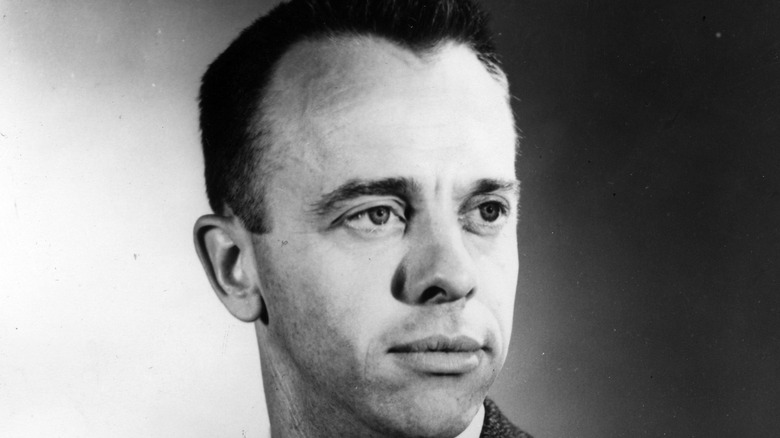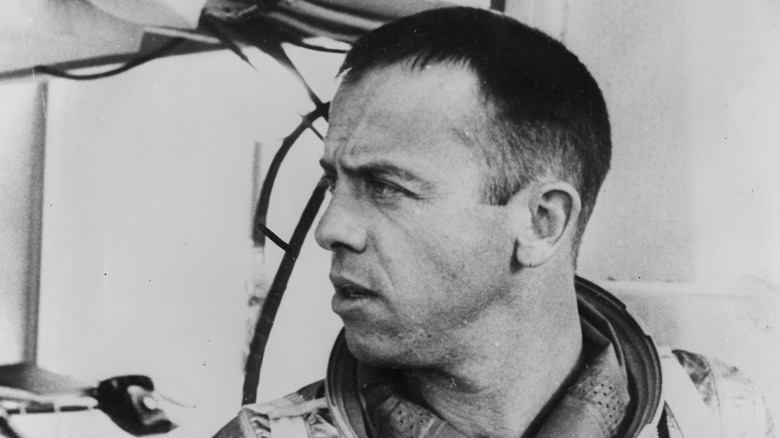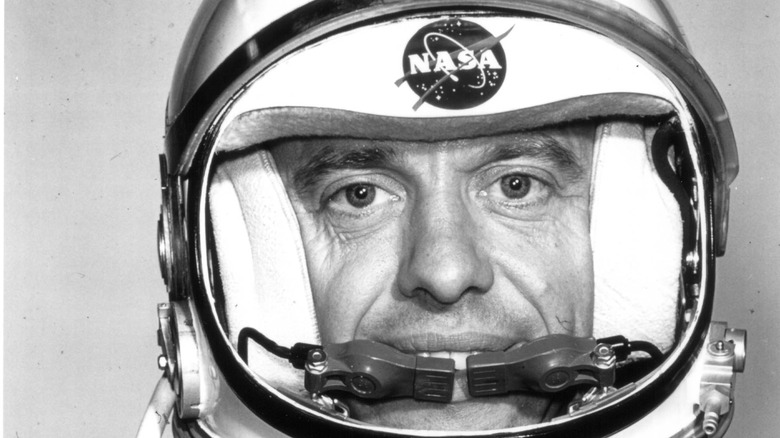Why The First American In Space Was Nearly Expelled From Flight School
When we hear about legends in various fields, we tend to focus on the end result — whether they performed a particular feat or won an award or a championship. There may be times when we hear about a particular struggle, like an illness, that they overcame to reach the heights that they did. That bit of news might serve to make their achievement even greater. It humanizes them to the people who wish they could do something similar.
The legendary astronaut Alan Shepard is known for several things. Per NASA, he was a naval officer whose ship entered Tokyo Bay when the Japanese surrendered during World War II, he was part of the first astronaut class that NASA chose, along with John Glenn, Gus Grissom, as well as others. He was also the first American in space, and he later walked on the moon. That is an impressive track record. However, people might not be aware that he almost did not make it out of flight school, per Business Management Daily.
Yes, Alan Shepard almost became a mere statistic. He entered naval flight school, and both his grades and flying skills were decidedly sub-par. Rather than being discouraged, though, he took private flying lessons and was able to demonstrate excellent flying skills, enough to stay in the program.
Alan Shepard overcame a lot
The thing was, it might not have only been the fact that he was close to failing out of flight school to make Alan Shepard focus on doing what he needed to do to stay on course. The Business Management Daily article also pointed out that he also experienced the death of a family member, a cousin, during that time frame. Perhaps it was the realization of the fragility of life that made him realize that he was this close to wasting his potential.
Before he did a self-correction, he was barely adequate as a pilot and made several mistakes that a less forgiving flight instructor could have booted him from the program for. They included not flying in the correct formation and not looking in the proper direction. Both of those could be disastrous and even possibly fatal for him or his squadron members. He was also reckless, flying too low near a beach and narrowly avoided a court-martial, according to Business Management Daily.
Ultimately, Alan Shepard was successful
Not only did Alan Shepard manage to rally back from his initial poor showing and stay in flight school, he also had to battle something later on: his own body. Via the BBC, the veteran astronaut, whose space flight in 1961 cemented him as the first American to fly that high — right behind Russian Yuri Gagarin — developed Meniere's disease in 1964, which made him dizzy. A procedure that involved a shunt in his ear worked, allowing him to rejoin the astronauts cleared for space flight.
According to NASA, Shepard's luck also held up in that he was moved from flying on Apollo 13 to Apollo 14. Jim Lovell's crew had to abort their mission due to an oxygen tank exploding — they survived, but their moon dream didn't. Shepard was then able to walk on the moon. He was 47 then, which made him the oldest man to set foot on the lunar surface.
Shepard was able to shake off the possibility of failure and not lose his dream of taking to the skies ... and beyond. He changed the course of that initial disastrous trajectory. Shepard knew that he could do the job and took every pain to ensure that he became a pilot. By doing that, he earned the respect of those around him, and most of all, himself. That conviction was what earned him the right to be the first man in space and to be one of a select few to set foot on the moon.


